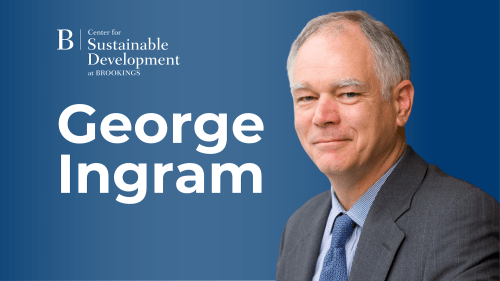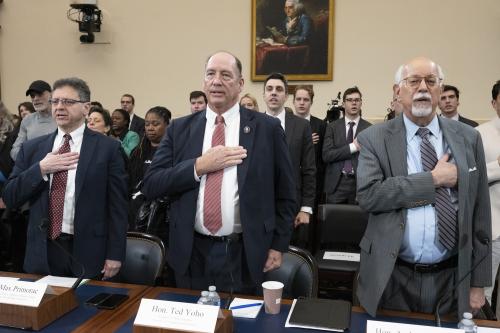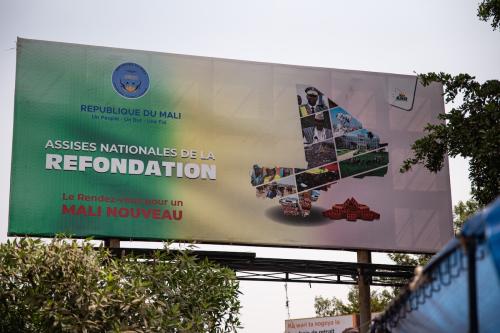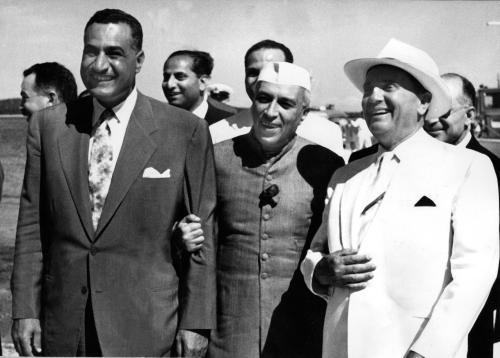This commentary was adapted from a May 19th address by the author to the USAID Alumni Association.
Why development is at a crossroads
Development as we know it is in disruption: To the traditional development goal of poverty alleviation has been added a range of global challenges from climate change to historic levels of migration and “permanent refugees.” At the same time, many developing countries are gaining the ability to set their own development path; ODA (Official Development Assistance) is in decline, with the 2023 level of $223 billion likely the high watermark.
What’s holding development back
It is important to acknowledge that development programs have made a significant contribution to progress in many nations, and the vast majority of assistance activities are purposeful, well-managed, and produce concrete results for individuals and communities. But also to understand that the buildup of excessive bureaucratic requirements, as noted by former speaker of the House Jim Wright, happens with even the most well-designed government programs and has overburdened many aspects of the development architecture.1 It therefore is timely, in considering the possible elements of development assistance moving forward, to take the opportunity to identify the shortcomings.
Hindrances to timely, effective implementation of assistance programs include:
- Too many small projects that lack coherence and collectively don’t add up to development.
- Too much paperwork and time consumed in procurement and accountability.
- Targets and indicators often measure outcomes rather than impact and often become the goal in place of the intended development impact.
- Insufficient patience—focus on short-term results.
- Design in donor countries.
- Risk aversion that limits innovation.
- Accountability to donors rather than local communities.
- Opaqueness of aid data and decisionmaking.
A menu of approaches
In thinking about how to move to a revised development architecture, it is useful to identify potential elements, understanding that what follows is just a menu, not a plan, and recognizing that not all are mutually compatible.
To begin with, development is not primarily about assistance, but the broad sweep of dynamics that affect national and global progress, such as trade and investment and government policies and regulation.
Locally led ownership has become a—if not the—governing principle of development and should remain as such, but its companion is co-ownership, meaning collaboration between national and global stakeholders that is essential in our interdependent world.
To have real impact, development efforts must reach scale, which might involve working with countries and fewer projects and focusing on systems and institutions.
Sustainability has been and must remain the byword of development. Ann Mei Chang in “Lean Impact,” adapting the Silicon Valley methodology of starting small and making adjustments until reaching proof of concept, suggests the design phase should encompass the concept of reaching scale; to add to that, the design phase should include sustainability—who/how is the activity to be continued when the donor and Northern partner has moved on.
There is a need for simplification. This could entail fewer objectives that are ambitious but realistic; programs that target a few critical constraints to development (think Power Africa, Feed the Future, PEPFAR, President’s Malaria Program); simpler procurement and reporting documentation best achieved by moving from cooperative agreements and contracts (which require extensive paperwork, commitments, and accountability) to grants and core support.
Effective development requires collaboration, which for donors means moving from proforma coordination to actively working together toward the same objectives and in compatible ways, including working from national platforms comprised of donors, the partner government, and local stakeholders.
Supporting the development of core public goods offers a way for donors to collaborate, work at scale, spread out, and minimize costs to partner countries to meet critical needs, and avoid vendor lock-in.
The private sector is essential to economic growth. USAID’s experience offers the model of engaging with, not just corporate philanthropy, but the business operations of companies, which requires modifying donor procedures to be more amenable to the operating ways of the private sector, and which have the potential of reaching scale and sustainability.
Donor programs must have flexibility and nimbleness so as to be responsive to changing circumstances and partner stakeholder priorities and needs (requires moving away from congressional earmarks and directives).
Putting cash in the hands of targeted families and communities has in many circumstances proven to be a quick and cost-effective means of support, especially in humanitarian circumstances, but also to subsidize family wellbeing, when it can draw on and boost the local market.
To understand that digital hardware and software are critical in today’s world for security, economic, and social welfare, look at the recent experience of Ukraine—with ten years of public/private collaboration building government digital capacity, Ukraine quickly created means of communicating virtually with and extending services to Ukrainian citizens wherever they might be and to make the country more resilient in the war effort. With its advanced digital and AI capacity, the U.S. can help build digital capacity in developing countries.
Now think of the potential of joining digital with cash, how at the beginning of the COVID pandemic, Togo put cash in the hands of families in just a few weeks, not the months it took the U.S. to mail checks and send money to our bank accounts.
Development involves trying new things, being innovative, and being less risk averse, which requires acceptance by Congress and other entities responsible for accountability/oversight functions to accept that not all assistance programs will be successful and important lessons can be learned from failure and mistakes.
Development is people. Development requires talent that is knowledgeable, well-trained, and innovative. Possibly the best way to contribute to development, consistent with locally led development, is to help train the next generation (participant training), so the citizens of partner countries are better able to choose their own path. In the first several decades of U.S. assistance, USAID financed the attendance of tens of thousands of early and mid-career professionals from developing countries at U.S. universities in programs ranging from short-term training to PhDs. Many of these people became future public and private sector leaders in their countries. Taking advantage of one of our great assets – our system of higher education—while building a two-way brain exchange and advancing U.S. soft power—could make a significant contribution to development.
For donor operations, ensuring that programs are well run and effective requires an adequate cadre of staff that is trained and experienced in program management (design, strategy development, oversight, evaluation) and in technical skills (health, education, energy, business development, economics, democracy, finance, governance).
Connecting the dots
With more than 95% of USAID’s experienced staff having been precipitously shown the door, leaving only several hundred from a cadre of what was above ten thousand to manage foreign assistance, maybe this reality of a few, less developmentally experienced staff is the dynamic that links many of the components identified above.
- Locally led development with grants and core support to local organizations to support their missions
- Collaboration with other donors and private sector; country platforms that bring donors and local stakeholders together to work at Scale
- Co-ownership with INGOs, contractors, and private companies
- Simplification—fewer countries, fewer objectives (a few public goods), simpler processes
- Scale—fewer projects (recognizing that small projects can be the test phase for projects at scale)
- Transparency
- Public goods—a few that play to America’s strengths and lend themselves to collaboration, such as digital, agriculture, health
- Flexibility and nimbleness
- Cash
- Participant training
Bring together areas for improvement and areas of strength, rethinking how we work and who we empower, would involve a number of shifts, including from aid-centered to ecosystem-centered; from donor-led to locally led; from donor-designed activities to funding the missions of local organizations and greater engagement/partnerships with private sector; from fragmentation to scale; from risk-averse to risk-smart.
Conclusion
Northern donors and organizations should be guided by the prescriptions set forth in Stand With Civil Society that call for acting on the disruption in the development space to forge a new North/South relationship that is peer-to-peer and mutual respect.
-
Footnotes
- Jim Wright, “Balance of Power”
The Brookings Institution is committed to quality, independence, and impact.
We are supported by a diverse array of funders. In line with our values and policies, each Brookings publication represents the sole views of its author(s).







Commentary
Taking advantage of disruption to update aid
June 10, 2025